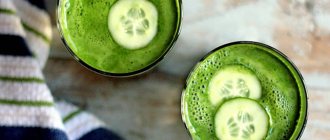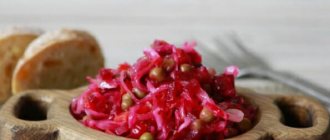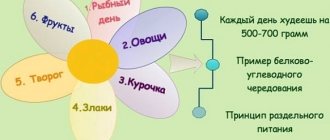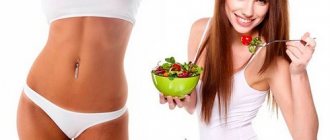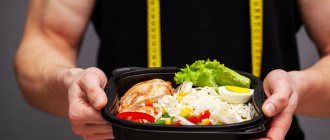Sodium chloride, or table salt, is an essential ingredient for preparing various dishes. To maintain water-salt balance, it is enough for a healthy adult to consume 5-7 g of salt per day (including that contained in prepared foods).
Today, most people consume sodium chloride well above normal (in some cases up to 30-40 g per day). This entails various health problems - primarily water retention, edema, increased blood pressure and weight gain.
The main goal of a salt-free diet is to normalize the water-salt balance in the body. This diet is shown:
- for hypertension;
- kidney diseases;
- obesity;
- tendency to edema;
- diseases of the cardiovascular system.
A salt-free diet is contraindicated:
- pregnant and lactating women;
- persons with thyroid dysfunction;
- children and teenagers;
- athletes and people working in difficult working conditions.
During the hot season, it is not recommended to adhere to a salt-free diet. You can follow it for 14 days, after which a smooth exit is necessary. To do this, you need to gradually increase the amount of salt to 5 g per day.
Genetics and salt
Genetic markers: aldosterone synthase CYP11B2 (an enzyme that is involved in the synthesis of aldosterone and promotes the retention of sodium in the extracellular space, and with it water) and adducin ADD1 (regulates the activity of the Na+-K+ pump in kidney cells and affects the distribution of sodium in the body). They predispose to fluid retention and are risk factors for hypertension. If there is a change in these markers, it is necessary to limit table salt.

The benefits of salt
Content:
- The benefits of salt
- The essence and rules of a salt-free diet
- Prohibited Products
- Authorized Products
- Japanese salt-free diet
- Salt-free diet for 15 days
- Salt-free diet for 4 days
- Salt-free diet for pregnant women
- Salt-free rice diet
- Results and harm of a salt-free diet
- Salt-free diet recipes
- conclusions
Salt is vital for the normal functioning of the body, the stable functioning of all its important organs and systems. Therefore, complete abstinence from salt is simply impossible. Otherwise, this can lead to unpleasant consequences, because salt is necessary for the proper production of insulin, as it is capable of breaking down glucose. It helps to relax the muscles, which is necessary for their constant work. Salt promotes the rapid digestion of food and the breakdown of food, since thanks to it, hydrochloric acid is produced in the human body. That is, it is with the help of salt that all useful substances, vitamins, macro- and microelements enter the blood. Thus, it turns out that salt is really good for the body, but only in small quantities.
Eating food without salt for a long time can lead to serious diseases such as anorexia and osteoporosis. It will cause metabolic disorders and nervous system disorders, which can result in depression or other mental illnesses.
Options
To effectively lose weight without harm to your health, it is very important to choose the right diet option.
By timing
- Weekly
Many who decide on a salt-free diet only last 7 days, as bland food quickly gets boring. The problem is that such a fast for a week is ineffective and the results will be no more than 3 kg, and only due to the removal of excess fluid from the body, but all fat deposits will most likely remain in place. Although the initial weight and individual characteristics will play a role here.
- Two weeks
In 14 days you can lose from 7 to 14 kg. The main thing is to adhere to the basic principles and not deviate from the pre-compiled menu.
For this weight loss system, you can find terms of 3 weeks or even a month online. But, answering the question of how long you can be on a salt-free diet without harm to your health, experts recommend not going beyond a two-week fast to avoid complications.
By product
- Japanese
The salt-free Japanese diet is a classic of the genre. Lasts 2 weeks, all dishes are steamed and without salt. Preference is given to protein products. It is very convenient if you have a multicooker.
- From Orbakaite
Not much different from the classic version. Special rules apply here: you can start eating only in a favorable mood. While losing weight, take a break from all your problems. Snacks (lunch and afternoon snack) are excluded, drink water an hour before meals. But physical activity is allowed.
- Chinese
The Tibetan/Chinese salt-free diet lasts 13 days and is distinguished by its strictness. Promotes refusal not only from salt and all spicy foods, but also from dairy products. The first week - 3 eggs a day, you can add 2 oranges, water and green tea to the menu. The second week is easier to bear, as you can eat rice and sea fish.
- Protein
Designed for 15 days. In the first 7 days, the emphasis is on protein foods, then there is a smooth transition to lower-calorie plant foods. Here, a prerequisite is the use of vitamins to balance the diet. The basis of the menu is boiled chicken, water porridge, and lean fish. In recent days - greens, vegetables, fruits.

Products containing protein
- Rice
It will be a good option for quick weight loss. A glass of rice is cooked without salt and divided into portions to be eaten throughout the day. Green tea, mineral water, apples (unsweetened and no more than 2) are allowed. Duration - 3 days. Results - 4 kg. Categorical contraindications: stomach and heart diseases.
- Low carb
Prevents the body from feeling a lack of fats and proteins. Duration - no more than 2 weeks. In terms of effectiveness, it can be no less effective than the Chinese one: losses up to 10 kg.
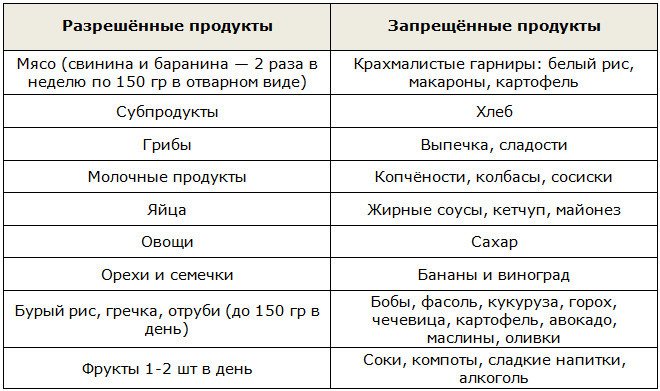
- Vegetable
Suitable for those who adhere to a vegetarian lifestyle. Avoids consumption of meat and fish. There is no need to give up dairy products.
The essence and rules of a salt-free diet
In fact, it is impossible to completely give up salt even because it is present in various foods: meat, bread, vegetables and even various fruits. The salt-free diet is based precisely on this principle - the use of salt, which is contained only in foods, completely excluding other types. This strict regime is suitable for people with exacerbation of chronic diseases or with advanced disease states. If the goal of such a diet is only to get rid of puffiness, then it is quite possible to get by with a gentle option. In this case, adding salt to the food is allowed, but table salt should be used only in a minimal amount.
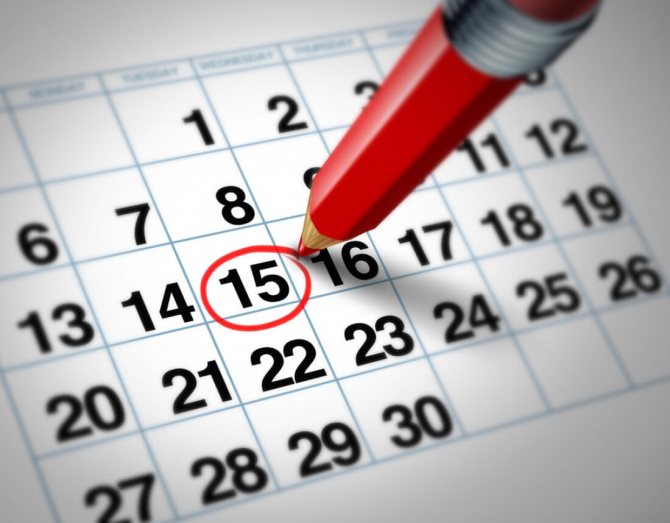
A salt-free diet can last from 4 to 15 days, depending on the results you want to achieve. And to really please these results, you should follow a few simple rules, thanks to which a salt-free diet will not cause serious discomfort:
- the daily diet should be divided into several small portions, eaten at least five times a day, but not much;
- It is better to eat steamed dishes, completely eliminating frying;
- salt dishes either at the very end of cooking, or already cooked foods;
- add oil only to prepared dishes;
- Garlic, onion or herbs can be used as a salt substitute; the addition of soy sauce is allowed, but only without salt content;
- It is strictly prohibited to consume alcoholic beverages;
- Every day you need to drink more than two liters of water;
- do not overeat and always get up from the table with a slight feeling of hunger.
Compliance Rules

To use a salt-free diet for weight loss, you need to follow certain rules.
- Fractional meals in small portions 4-5 times during the day.
- All dishes are prepared and consumed without salt.
- Avoid fried, pickled and smoked foods. Dishes need to be steamed, boiled or baked.
- Add oil, spices, seasonings to already prepared food.
- At the end of the meal, you should still feel slightly hungry.
- You cannot lose weight this way in the summer: in the heat, due to increased sweating, a lot of salt is lost and additional restrictions can lead to a deficiency.
- You need to drink up to one and a half liters of water per day.
- Control your physical activity. Two-hour workouts in the gym are canceled while losing weight.
- It is advisable to have dinner 3 hours before bedtime.
- The diet should be gradual: in the first 2-3 days, limit the consumption of baked goods, pasta, sauces, legumes and, of course, salt.
If you feel that you can no longer eat bland food, it is better to add a little salt to it than to break down in the middle of the course.
How to replace salt?
Seaweed (kelp), garlic, onion, dried herbs, herbs, natural seasonings (cumin, turmeric, oregano), citrus fruits, fermented milk products, soy sauce.
How long can you stay on a salt-free diet?
No more than 2 weeks.
What can you eat?
Permitted and prohibited products are presented in the following table:

The amount of dairy products should be limited, since they are purchased mainly in the store, and they always contain some amount of salt.
Why is such a diet dangerous?
The main danger is a violation of the water-salt balance, but with proper weight loss this is excluded.
Negative consequences can only appear if it is too prolonged (longer than 2 weeks) and if contraindications are not observed. So you can fearlessly put this method into practice.
What is the most effective salt-free diet?
Chinese, but it has such a minimal number of permitted products that only Tibetan monks with their fortitude can do it.
From the anatomy course. The human body constantly contains 250 grams of salt. It is present in intercellular fluid, lymph, soft and bone tissues.
Authorized Products
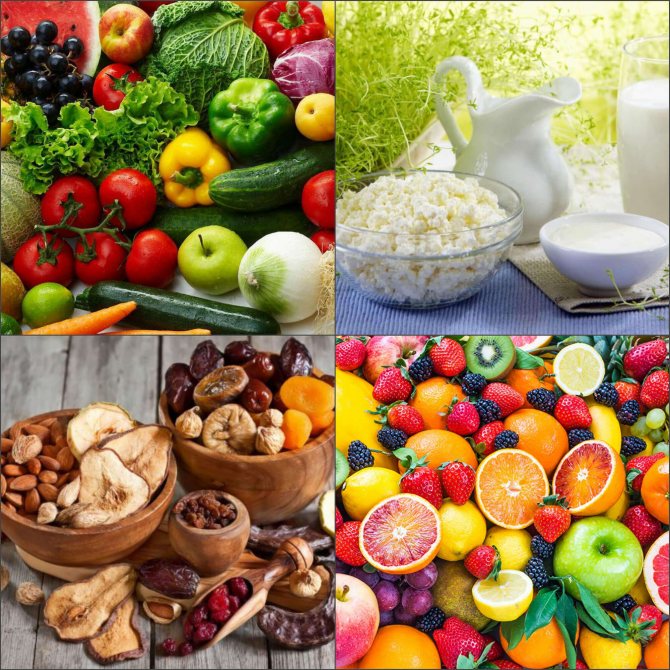
List of allowed foods on a salt-free diet:
- raw and boiled vegetables;
- skimmed milk;
- fermented milk products and cottage cheese;
- fruits and berries;
- dried fruits and jelly;
- low-fat types of fish and meat;
- vegetable broth;
- rye and wheat bread;
- porridge;
- tea.
Menu
A sample menu for 14 days for every day will help you create your own diet. Keep in mind that to lose weight you need to control the number of portions:
- soups, salads, side dishes, fish and meat for lunch - 150 g each;
- any dish for dinner - 200 g;
- drinks - one glass per meal;
- lunch can include 1 low-calorie fruit of any kind per day;
- For an afternoon snack, you can drink a glass of fermented milk drinks: yogurt, yogurt, fermented baked milk, kefir, etc.
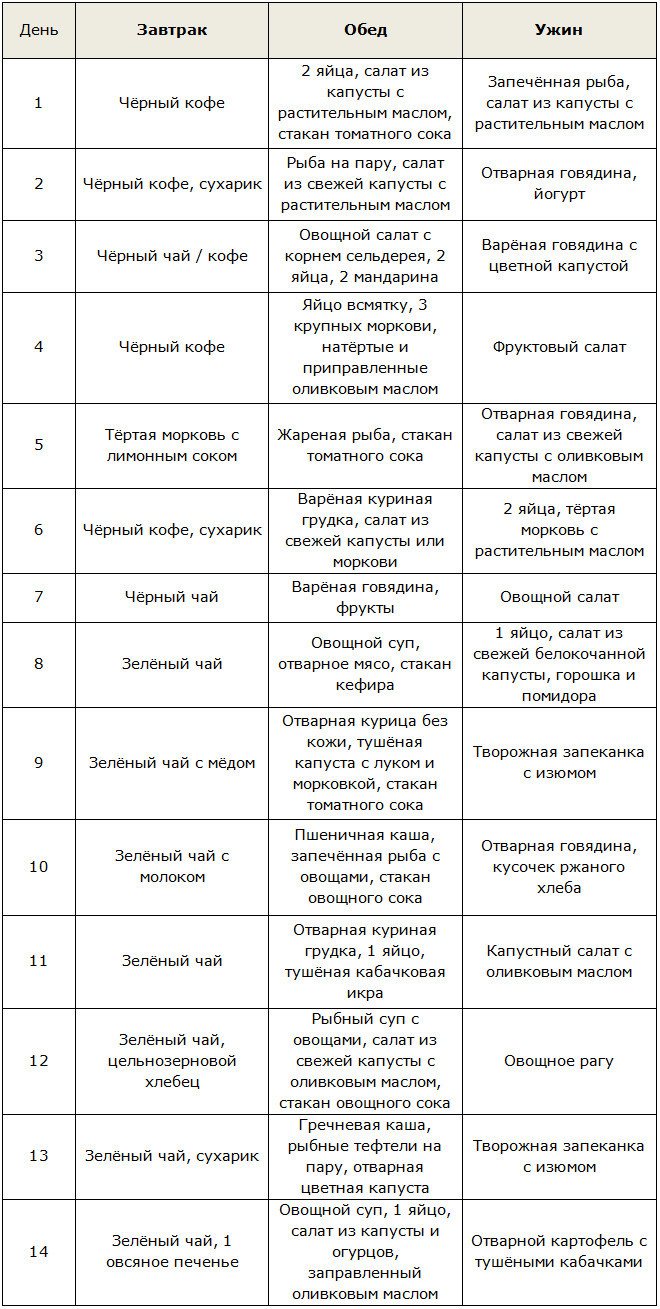
Interesting statistics. According to estimates, by the age of 70 a person eats about 500 kg of salt.
Japanese salt-free diet
The Japanese diet is a type of salt-free diet. This is not a quick, but very effective means for losing weight. It is balanced, and during the fasting process you can lose up to four kilograms of weight weekly, and for the entire course of the diet, about eight kilograms. This option requires a complete absence of salt in dishes. You can use a thirteen-day weight loss method, or you can limit yourself to a diet program for a week. You can use dishes for the first 7 days in your diet.
Japanese salt-free diet menu for 13 days
First day:
- breakfast – natural freshly brewed unsweetened coffee;
- lunch – boiled cabbage, flavored with vegetable oil, two boiled eggs, 250 grams of tomato juice;
- dinner - about two hundred grams of fish cooked in a double boiler or baked in the oven.
Second day:
- breakfast – natural freshly brewed unsweetened coffee, a slice of black rye bread;
- lunch - about two hundred grams of fish cooked in a steamer or baked in the oven, boiled cabbage, flavored with vegetable oil;
- dinner – 250 grams of fermented milk product, one hundred grams of boiled unsalted beef.

The third day:
- breakfast – natural freshly brewed unsweetened coffee, a slice of black rye bread;
- lunch – eggplants or zucchini fried with vegetable oil;
- dinner - about two hundred grams of unsalted beef cooked in a double boiler, two hard-boiled eggs, fresh cabbage flavored with vegetable oil.
Fourth day:
- breakfast – fresh small carrots and freshly squeezed lemon juice;
- lunch - about two hundred grams of fish cooked in a steamer or baked in the oven, 250 grams of tomato juice;
- dinner - about two hundred grams of various fruits.
Fifth day:
- breakfast – fresh small carrots and freshly squeezed lemon juice;
- lunch - about two hundred grams of fish cooked in a steamer or baked in the oven, 250 grams of tomato juice;
- dinner - about two hundred grams of various fruits.
Sixth day:
- breakfast – natural freshly brewed unsweetened coffee;
- lunch - about two hundred grams of unsalted boiled chicken, fresh cabbage with carrots, flavored with vegetable oil;
- dinner - two boiled eggs, one fresh carrot, flavored with vegetable oil.
Seventh day:
- breakfast – freshly brewed green tea;
- lunch – about two hundred grams of unsalted boiled beef;
- dinner - you should choose any of the above complexes, except for the diet from the third day.
Eighth day:
- breakfast – natural freshly brewed unsweetened coffee;
- lunch – half a kilogram of unsalted boiled chicken, fresh cabbage and carrots flavored with vegetable oil;
- dinner - one grated carrot, flavored with vegetable oil, two boiled eggs.
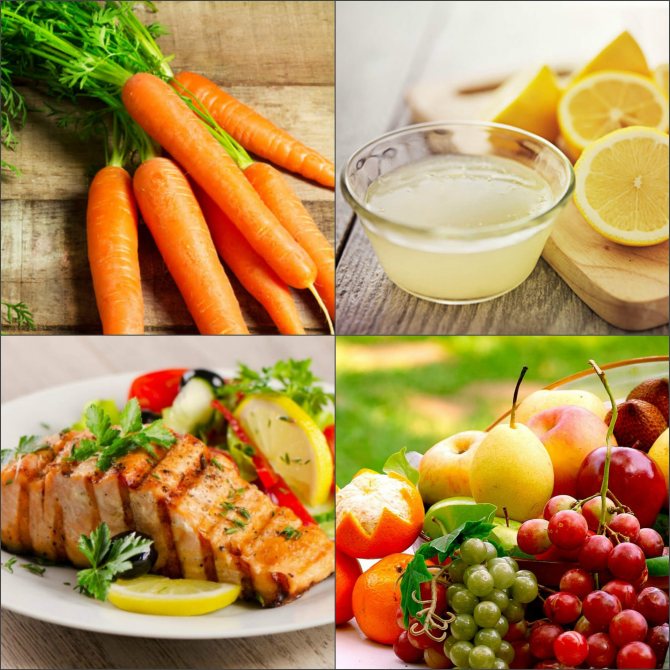
Ninth day:
- breakfast – fresh small carrots, freshly prepared lemon juice;
- lunch – about two hundred grams of fish cooked in a steamer or baked in the oven, 250 grams of tomato juice;
- dinner - about two hundred grams of various fruits.
Tenth day:
- breakfast – natural freshly brewed unsweetened coffee;
- lunch – fifty grams of hard cheese, one boiled egg, three medium carrots, flavored with vegetable oil;
- dinner - about two hundred grams of various fruits.
Eleventh day:
- breakfast – natural freshly brewed unsweetened coffee and a slice of black rye bread;
- lunch - eggplants or zucchini, fried with vegetable oil;
- dinner - fresh cabbage, seasoned with vegetable oil, two boiled eggs, about two hundred grams of unsalted boiled beef.
Twelfth day:
- breakfast – natural freshly brewed unsweetened coffee and a slice of black rye bread;
- lunch - baked or steamed fish, fresh cabbage flavored with vegetable oil;
- dinner – 250 grams of fermented milk product, one hundred grams of boiled unsalted beef.
Thirteenth day:
- breakfast – natural freshly brewed unsweetened coffee;
- lunch – boiled cabbage, flavored with vegetable oil, two boiled eggs, 250 grams of tomato juice;
- dinner - about two hundred grams of steamed or baked fish.
Salt-free diet for 15 days
This diet is designed for five stages, each of which lasts three days.

The first stage involves eating chicken breast, or chicken meat without fat and skin, for three days. The recommended amount is 500 grams per day.
At the second stage, you are allowed to eat lean fish in the amount of 500 grams per day for all three days.
At the third stage - various porridges cooked in water. Not sweet and not salty. Quantity: 500 grams per day.
The fourth stage involves introducing vegetables into the diet. You are allowed to eat different vegetables, excluding only potatoes from the diet. You can eat fresh, boiled or baked foods in quantities of up to two kilograms per day.
The last fifth stage allows the consumption of fruits, with the exception of bananas, in an amount of about two kilograms per day.
Do you need to cleanse your body?
Our body has its own detox system, which consists of several organs: liver, kidneys, skin, intestines, lungs and lymphatic system. Throughout life, each organ performs its functions, daily removing toxins and bacterial waste products. The body has no reason to accumulate harmful substances.
If at least one organ fails or ceases to cope with its functions, then the symptoms will be severe. An example of this is kidney or liver failure. Weakness, pale skin and poor appetite can be symptoms of a variety of diseases, and do not indicate the need for cleansing.
The best thing you can do for your body to reduce its toxic load is not to interfere with it:
- Stop smoking, using drugs and alcohol;
- Make your diet healthier and more varied;
- Lose weight and cure chronic diseases;
- Go in for sports and add daily moderate activity to your life;
- Stop taking medications without a doctor’s prescription;
- Get out into nature more often and breathe fresh air.
Salt-free diet for 4 days
During such fasting you can lose about five kilograms of excess weight. Products recommended for consumption should be eaten in small quantities at several meals.
On the first day you need to eat only boiled potatoes and drink unsweetened drinks. The use of various seasonings, salt and sugar is prohibited.
On the second day, you should give preference to pasta, still without salt, seasonings and oil. You should also drink sugar-free drinks.
On the third day, it is recommended to eat lean boiled chicken without skin and sugar-free drinks.
The menu on the fourth day is exactly the same as on the first.
Medical diets for health reasons
There is no universal “medical detox”. In medicine, there are detoxification systems, which we wrote about above, this is true, but doctors do not use dry fasting, decoctions, sprouts or detox cocktails for treatment.
There are diseases that require a special diet - for example, gastritis, pancreatitis, diabetes, obesity and others. The doctor selects medications and the type of nutrition for the patient that will help quickly cope with the disease or its symptoms. Such diets are aimed at reducing weight and blood sugar, restoring the functions of the gastrointestinal tract, and suppressing allergic reactions.
Indeed, medical diets can be beneficial. But they have nothing to do with the restrictive detox diets or cleanses you read about on the internet.
Salt-free diet for pregnant women
It is known that salt can retain water in the body, which invariably leads to edema. This can be noticed especially often during pregnancy. Of course, expectant mothers should never go on a diet, but following some rules of a salt-free diet can even be useful in some cases. It is best to start following this diet in the third trimester, when susceptibility to edema is highest.
Sample menu for a salt-free diet during pregnancy
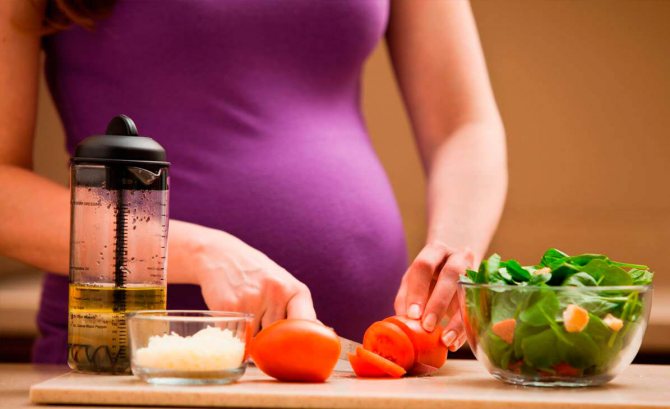
Breakfast:
- semolina porridge;
- milk tea or coffee with milk.
Dinner:
- borscht or soup;
- stewed or steamed meat;
- pasta or stewed vegetables;
- baked potato;
- fruits.
Afternoon snack:
- bun with fermented baked milk or milk;
Dinner:
- steamed fish or meat cutlets;
- boiled potatoes;
- milk;
- Apple pie.
How is a salt-free diet beneficial for weight loss?
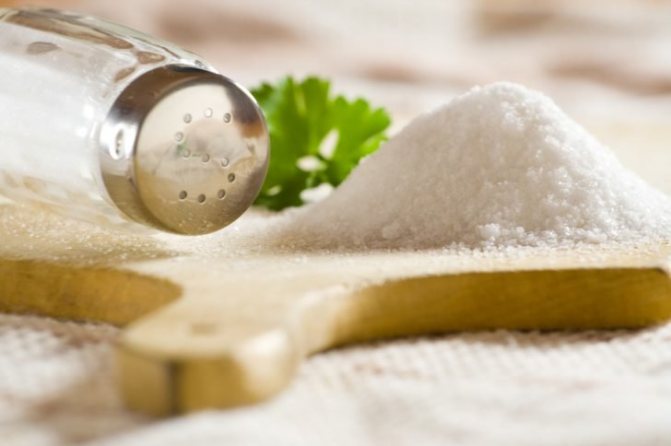
How I lost half my weight in six months
The main benefits of a diet that uses salt-free nutritional rules are aimed at improving the health of the body when:
- kidney diseases;
- heart diseases;
- disruptions in the cardiac and vascular system;
- elevated blood pressure levels;
- atherosclerosis;
- increased cholesterol;
- tendency to edema;
- overweight.
If you limit the amount of salt or exclude it from recipes, the benefits will be:
popular:
- ✅ Strange but effective weight loss methods used by celebrities
- ✅ Effective Biocomplex formula helps get rid of food addiction
- ✅ Minus 24 kg without leaving home! A Muscovite who lost weight in quarantine “blew up” Russia with her recipe
- reducing swelling syndrome;
- decreasing pressure values;
- decreased renal pressure;
- cleansing the blood and easing the work of the heart;
- improving calcium absorption.
What foods can be consumed and which cannot?

As part of weight loss, various types of food restrictions are used. Any diet requires adherence to strict nutritional rules that cannot be violated.
The salt-free principle in nutrition is focused on the treatment of various diseases . A diet with a salt-free menu lasting several days can have benefits for the body.
The goal of the diet is salt-free nutrition. Weight loss occurs due to the removal of excess fluid, which is why the correct selection of menus and food products is so important.
An innovative drug for losing weight by 30-40 kg! Removes even age-related fat without chemicals, liposuction, diets or exercise. Exercises
Returning to regular recipes containing salt will most likely lead to zero weight loss results due to the accumulation of water in the body.
The rules of the salt-free method are to avoid using salt in recipes. During this period the following products should not be consumed:
- sausages;
- smoked products;
- pickles;
- marinades;
- canned food;
- cereals;
- confectionery and bakery products.
As part of a diet according to salt-free rules, you can eat meat and fish , represented by low-fat varieties. For side dishes, you must use vegetable recipes without the use of salt. Exceptions include potatoes .
The rules for salt-free weight loss allow the consumption of 200 g of rye bread per day.
Benefits for the body during weight loss
soups included in the salt-free menu with fish and vegetable broth. Eggs will help support your body during weight loss, but you should remember to use them in moderation.
How to avoid obesity and regain an erection at any age?
You can include low-fat dairy products in your diet menu. The diet includes fresh fruits and berries.
Salt-free nutrition, if you follow the rules, will help you lose weight by several sizes and improve your body health.
Salt-free rice diet
One of the popular types of salt-free diet is the rice diet. Her diet is quite balanced and includes the consumption of boiled rice without salt, herbs and fresh unsalted vegetables. You can eat rice porridge as much as you like, but it is better in moderation. At the same time, the amount of vegetables on the menu should not exceed the amount of rice. The recommended duration of such a diet is 7 days. Throughout the entire period of such fasting, you can lose from three to five kilograms of excess weight. In addition, the rice diet is not only a way to get rid of unnecessary pounds, but also a way to quickly and effectively cleanse the body. After all, rice is able to remove dangerous toxins and harmful waste, and also has a significant rejuvenating and healing effect.
Results and harm of a salt-free diet
With proper and moderate consumption of salt in food, the results of a salt-free diet will undoubtedly please you, since such a diet will not only allow you to get rid of a few extra pounds, but also restore and normalize the water-salt balance of the body. However, you should remember that you need to exit any type of fasting with caution, gradually introducing other foods into your diet. It is advisable, of course, to try to use salt in fairly small quantities, and perhaps even replace it with spices and seasonings.
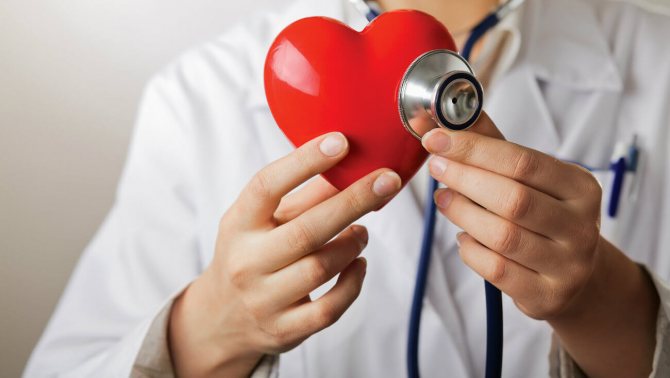
Harm from a salt-free diet is only possible if you use it for a long time, since prolonged consumption of food without salt can cause metabolic disorders. In this case, dehydration, cramps in the calf muscles, and poor absorption of vitamins and minerals necessary for the normal functioning of the organs and systems of the human body may occur. Also, a lack of sodium, which is contained in table salt, can lead to heart disease. Therefore, it is better to listen to the recommendations of nutritionists and not to sit on a strict salt-free diet for a long time.
Contraindications and harm
Contraindications that must be strictly followed to avoid complications:
- hypertension;
- diseases of the heart and blood vessels;
- liver and kidney pathologies;
- pregnancy, lactation;
- disorders in the functioning of the thyroid gland;
- age under 18 and after 55;
- with constant physical activity (including professional sports).
Long-term dieting disrupts the water-salt balance. When there is not enough sodium chloride, the body is forced to pull it from the bones, weakening them.
In addition, the undesirable consequences of such a fast can result in the following side effects:
- metabolic disorders;
- nausea;
- loss of appetite;
- muscle weakness;
- digestive disorders;
- a sharp decrease in pressure;
- general ailments.
In fact, the likelihood of a shortage is very low. In practice, a complete rejection of the “white death” is impossible. After all, all store products contain it. So you are unlikely to experience any harm from such a diet.
By the way, about harmfulness. Excess sodium chloride in the body makes the blood viscous, strains the kidneys, provokes heartburn, leads to the appearance of stones, has a bad effect on the liver and even causes heart attacks.
Salt-free diet recipes
In order to make it easier to endure the period of salt-free fasting, various recipes are proposed below. Cooking such tasty and healthy dishes will distract you and allow you to enjoy food without salt without causing discomfort.
Vegetable okroshka
To prepare this easy soup you will need:
- radishes – 10 pieces;
- cucumber – 2 pieces;
- potatoes - 2 pieces;
- celery stalk – 2 pieces;
- garlic – 2 cloves.
Finely chop the vegetables and place on plates. Pour the contents of the plates with kefir or whey.
Chicken pancakes
To prepare chicken and vegetable pancakes you will need:
- chicken fillet – 1 piece;
- onions – 2 pieces;
- potatoes - 2 pieces;
- carrots – 2 pieces;
- greenery;
- soda;
- lemon juice.
Best materials of the month
- Coronaviruses: SARS-CoV-2 (COVID-19)
- Antibiotics for the prevention and treatment of COVID-19: how effective are they?
- The most common "office" diseases
- Does vodka kill coronavirus?
- How to stay alive on our roads?
Finely chop the fillet, grate the onion, add to the meat and leave for half an hour. Then add grated vegetables, soda, herbs and a little lemon juice to the minced meat. Mix everything thoroughly and cook like regular pancakes. They will be especially useful in a double boiler. You can serve this dish with unsweetened yogurt or sour cream.
conclusions
A salt-free diet is effective and useful if you have chronic diseases for which salt consumption is contraindicated. You can also use a more gentle option for losing weight and getting rid of puffiness. In this case, a small amount of salt per day and the use of a variety of spices and spices are allowed. It is extremely important to drink enough water during this period. A salt-free diet helps not only to get rid of extra pounds of weight, but also to normalize the water-salt balance of the body. It is also useful for pregnant women, especially in the last trimester, when swelling appears. But it should be remembered that a lack of salt in the body is just as destructive as its excess. Therefore, when on a salt-free diet, the main thing is not to overdo it, because everything is good in moderation.
More fresh and relevant information about health on our Telegram channel. Subscribe: https://t.me/foodandhealthru
We will be grateful if you use the buttons:
Mechanism of action

There is no need to delude yourself that a salt-free diet is a guarantee of fat loss. The main reason for weight loss is the removal of fluid that has been retained for years due to excessive salt consumption, and this amounts to about 5 kg.
Modern man eats much more of it than the body needs. The daily portion can grow from 5-7 grams to 30-40. Therefore, the main benefit of such a weight loss system is to restore the water-salt balance.
Due to the outflow of fluid on a salt-free diet, the thighs and other parts of the legs, where all swelling is usually localized, lose weight greatly. But this does not mean that your stomach will not go anywhere after 2 weeks of hunger strike: a certain loss of fat will still occur, since there is a taboo on unhealthy foods.
Did you know that... to normalize the water-salt balance, a person needs only 5-7 grams of salt per day? In summer this figure rises to 10-15 grams.



